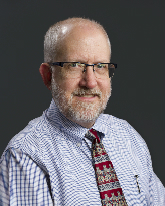非常抱歉,
你要访问的页面不存在,
非常抱歉,
你要访问的页面不存在,
非常抱歉,
你要访问的页面不存在,
验证码:

职称:Professor of Chemistry, Professor of Biophysics
所属学校:University of Michigan-Ann Arbor
所属院系:Biophysics
所属专业:Biophysics
联系方式: 734.764.5257
Education Ph.D., Stanford University
Although they are only present at part-per-million to part-per-billion levels, trace metals are absolutely essential for life. Our research is focused on understanding the many roles that trace metals (especially Mn, Fe, Co, Ni, Cu and Zn) play in biology. A portion of our work focuses on the biochemistry of metalloenzymes (proteins with metals at their active sites). Metalloenzymes catalyze reactions with a speed and selectivity that is unrivaled by conventional catalysts. We want to understand how metalloenzymes work. Our approach is to correlate metal-site structure with enzymatic function, with particular interest in Zn containing proteins. Zn has recently been shown to play a critical role in catalyzing the transfer of alkyl groups to thiol acceptors, forming thioethers. The enzymes, which are involved in a number of critical reactions, ranging from homocysteine homeostasis to protein farnesylation to alkene metabolism, generally contain thiolate-rich Zn sites. We want to understand the mechanism of Zn-promoted alkyl transfer. How does Zn(II) promote nucleophilic attack of a thiol on an alkyl donor? In addition to their enzymatic roles, essential trace elements play numerous other roles in biology and fluctuations in metal concentration are associated with numerous disease states. We have developed techniques that allow us to follow the distribution and chemical speciation of first row transition metals in intact tissue. Using an X-ray nanoprobe, we have been able to map sub-cellular distributions of metal ions with spatial resolutions as good as 100nm. Using x-ray absorption spectroscopy, we are able to determine the chemical speciation of these metal ions in intact biological tissues. The ultimate goal of this work is to develop the new field of inorganic physiology - the study of the transport, storage and distribution of metal ions in biology. We make extensive use of synchrotron radiation, using the unique resources available at synchrotron laboratories in the U.S. (Brookhaven, Argonne, Stanford and Berkeley) and abroad ( Japan , France ). A key technique is X-ray absorption spectroscopy. This is one of the only ways to obtain detailed structural information for non-crystalline systems. In addition to X-ray methods, we make use of a wide range of other spectroscopies, including EPR, IR and paramagnetically-shifted NMR.